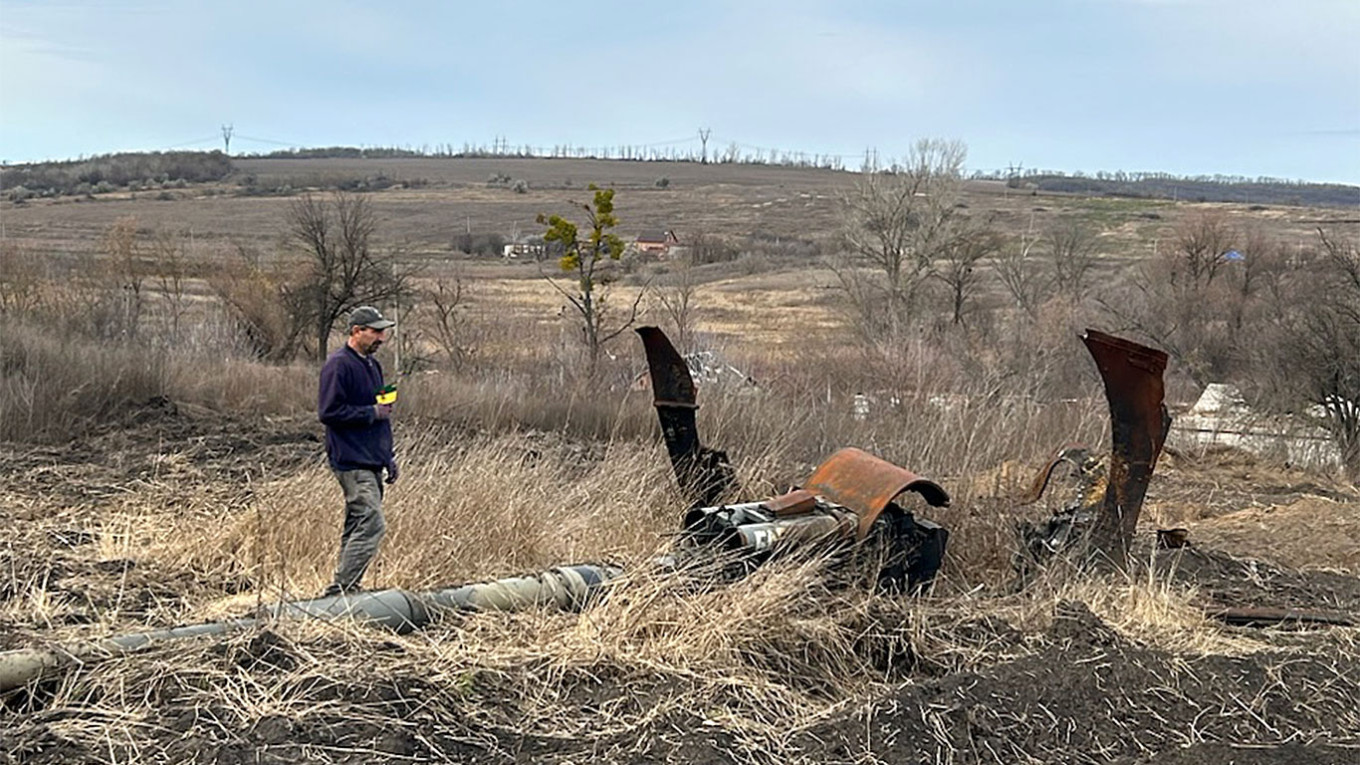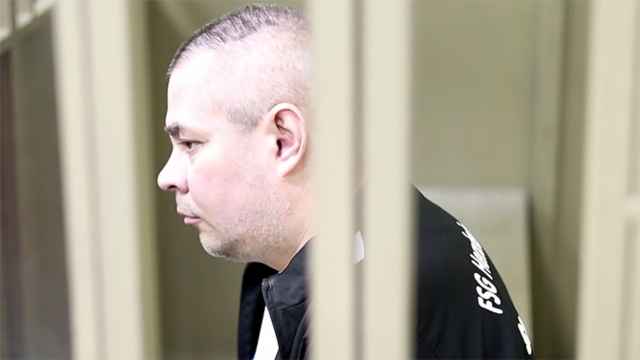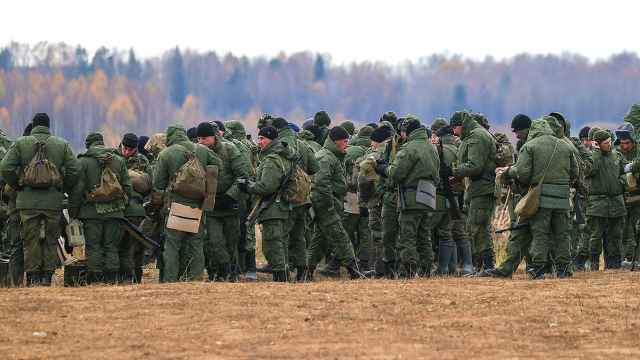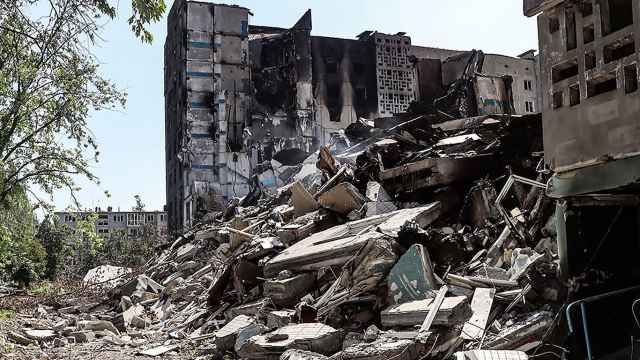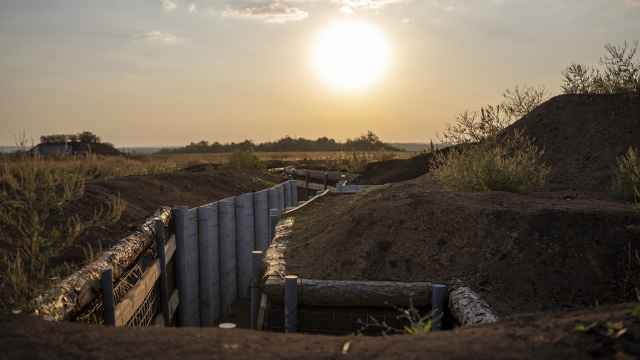KAMYANKA, Ukraine — Two weeks after Ukraine liberated this village in the Kharkiv region in September 2022, Viktor, a local farmer and tractor driver, and his wife Larissa returned to their home for the first time since the Russian occupation.
Half a year earlier, the couple had managed to escape the advancing Russian army. For the next six months, their village lay on the frontlines of Russia’s war against Ukraine.
"When we came back and saw all the destruction with our own eyes, we felt hatred towards the occupiers and were disgusted that the enemy's feet had trampled on our land," Larissa says. "We felt only anger and hatred."
Upon their return in September 2022, they saw their house was nothing but a pile of rubble. The approaching winter and the lack of heating and electricity meant they could not stay.
"It looked really bad, it was really bad," the couple laments.
They spent that winter in the relative safety of Odesa on the Black Sea, where the small family first fled when the shelling began, and where their daughter lives and studies.
Viktor and Larissa were finally able to move back to Kamyanka in March 2023.
They immediately got to work removing debris from their yard and fixing their greenhouse “because we knew we had to plant a vegetable garden to feed ourselves,” the couple says.
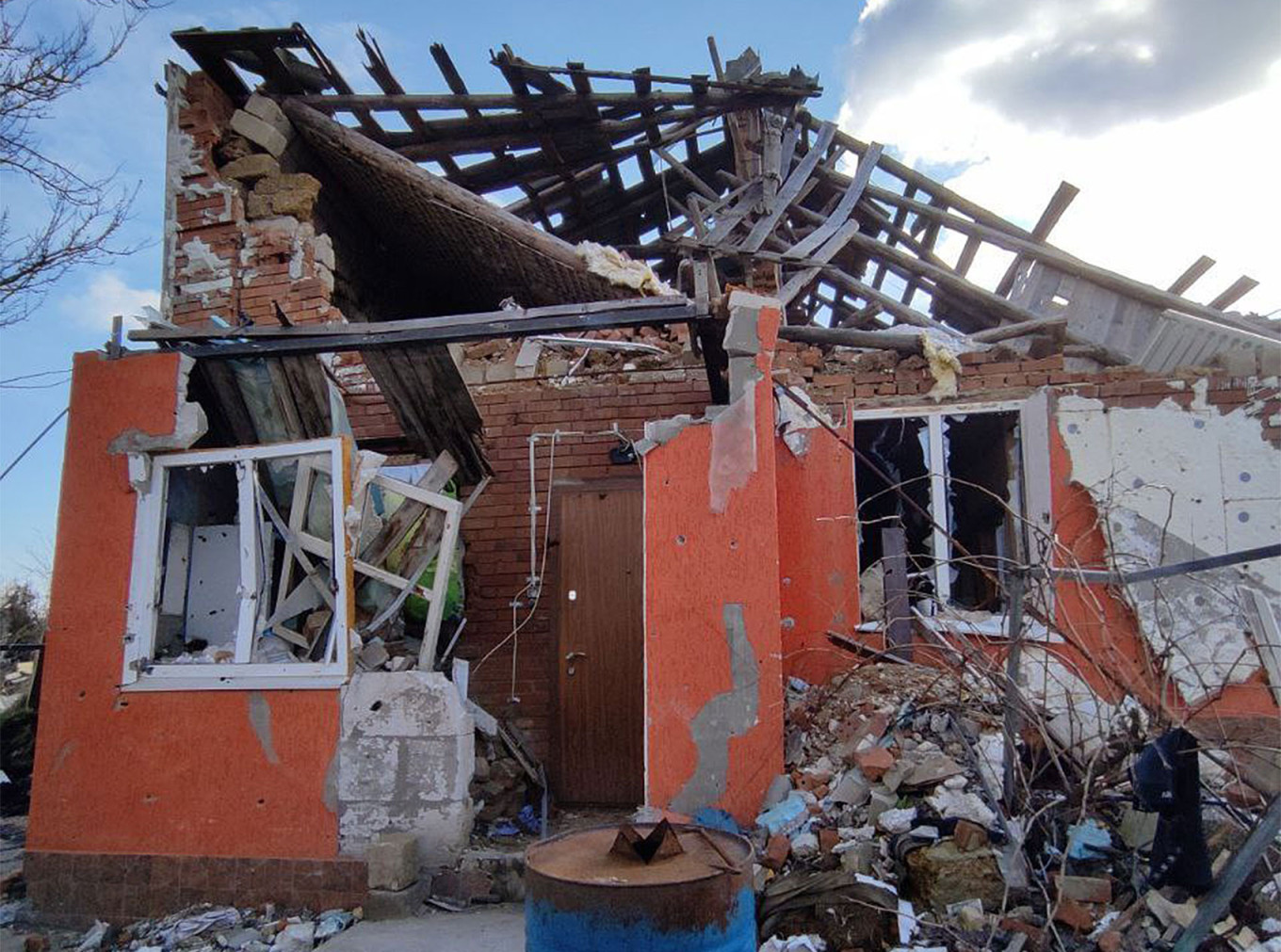
Today, little remains of Kamyanka.
Of the village’s original 1,200 inhabitants, Viktor and Larissa are two of about 12 who returned.
Ropes with signs warning of landmines stretch along the roads. Each street is as empty as the next. Green wooden crates that were once filled with Russian artillery ammunition are scattered throughout the village. A car lies on its roof beside a muddy path. At the end of the street stands a tank, burned out and rusted, with a Ukrainian flag waving in the wind.
Kamyanka is one of many Ukrainian villages leveled during the invasion that face the nearly insurmountable task of reconstruction. Houses, schools, critical infrastructure, roads and more need to be rebuilt from the ground up.
The European Commission has pledged around 40 billion euros ($43 billion) to Ukraine for humanitarian purposes and reconstruction, while Kyiv has earmarked another 50 billion euros ($54 billion) from its 2024-27 budget.
The current aid commitments are a fraction of what is needed for adequate reconstruction.
A spring 2023 report by the Ukrainian government, along with the World Bank, the European Commission and the United Nations estimated the costs of Ukraine’s reconstruction and restoration to be at least 383 billion euros ($413 billion).
"The Russian occupiers came and destroyed everything," Larissa says. "What would a person feel if they were in our shoes? When they see something like this, when you've built for years, invested all your energy, money and soul into your nest, and it's simply destroyed?"
While Larissa works in their garden, Viktor spends his days rebuilding their house piece by piece.
He uses wood from the ammunition crates to reconstruct the roof. Materials supplied by the United Nations and Ukrainian volunteers allow him to make progress in insulating the walls. A blue UNHCR tarp prevents rain from falling on his makeshift construction site. However, the lack of two exterior walls makes the house temporarily uninhabitable.
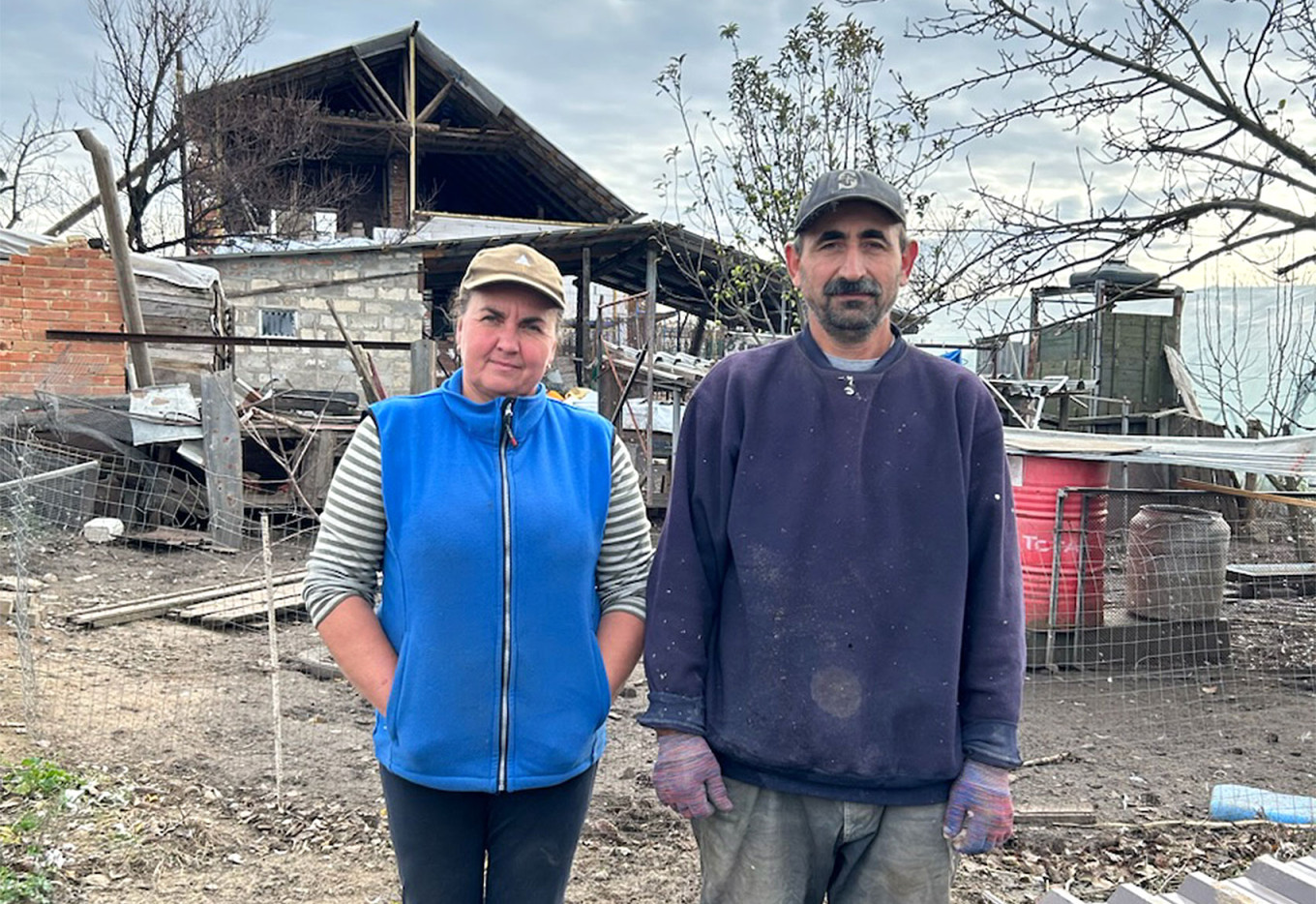
"Since our return, we have received a lot of humanitarian aid. There were food packages, hygiene items and construction materials,” Larissa says. “Considering what has already been done, we still need about 1 million hryvnias ($26,000) today."
The couple hopes that the state will provide part of this money.
Rebuilding a life
Viktor, Larissa and their two dogs vividly remember the first weeks of the war.
"When the shelling started, the war began, and the dog was the first to take cover. He remembers everything," Viktor said in Ukrainian.
The couple left Kamyanka on March 11, 2022.
After months of occupation, Ukrainian forces managed to push Russian troops back far enough to recapture Kamyanka. From there, Russian artillery destroyed everything that remained.
Those who could not or did not want to flee were trapped in their basements, expecting and hoping that Ukraine would drive the Russian soldiers out of artillery range.
For Viktor's family and their dogs, life in Kamyanka has changed completely since returning. Although the shelling has stopped, Russian fighter planes still periodically fly overhead.
"Everyone, but especially the dogs, is afraid of the planes," Viktor says.
However, a certain sense of security and calm has returned.
"There is no electricity, running water or heating here," Viktor says, pointing to his small diesel-powered generator.
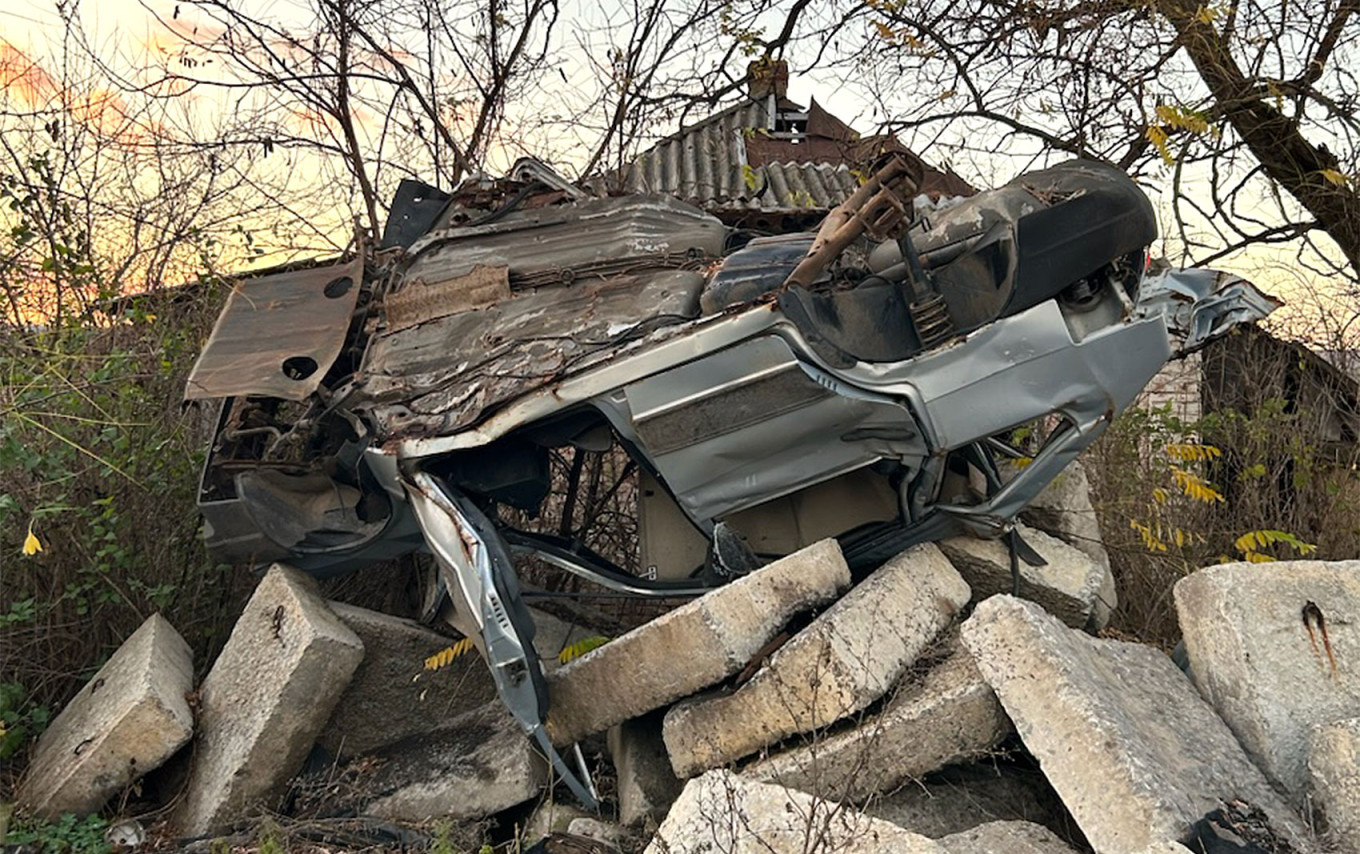
He and his wife live in what used to be the kitchen. They have a small table, a bed, a stove, food supplies and a television. "But we don't have time to watch TV," he jokes.
Proud of his reconstruction efforts, Viktor lays out his plans and dreams.
"Hopefully, we can stay here permanently next year," he says.
But there is still much to be done, and progress is slow. The house is barely stable and supported by a large metal post. Every wall needs to be rebuilt. The aid money helps, but the couple estimates that it will not be nearly enough to fix everything.
The remaining exterior walls have been sprayed with the letter "Z" — a symbol used to signify support for Russia's war.
On one wall, the words "We are from Penza" can be seen despite Viktor’s efforts to paint them over. Laughing, he explains that his grandmother was born in Penza, a Russian city southeast of Moscow.
Viktor points to the toilet in the former bathroom.
"They took everything," he says. "Everything. The washing machine, electrical appliances, furniture. The Russians took everything, but they didn't take the toilet! The toilet is fine!" Viktor laughs.
They nonetheless have to use an outdoor toilet they built in the garden because the village no longer has running water.
Threat of mines
Much of the land around Viktor and Larissa's property is still heavily mined.
On the other side of the village, local and foreign demining teams are working to defuse critical infrastructure and eventually restore the village's power supply. Occasionally, explosions can be heard when the German-donated demining vehicle drives over a mine.
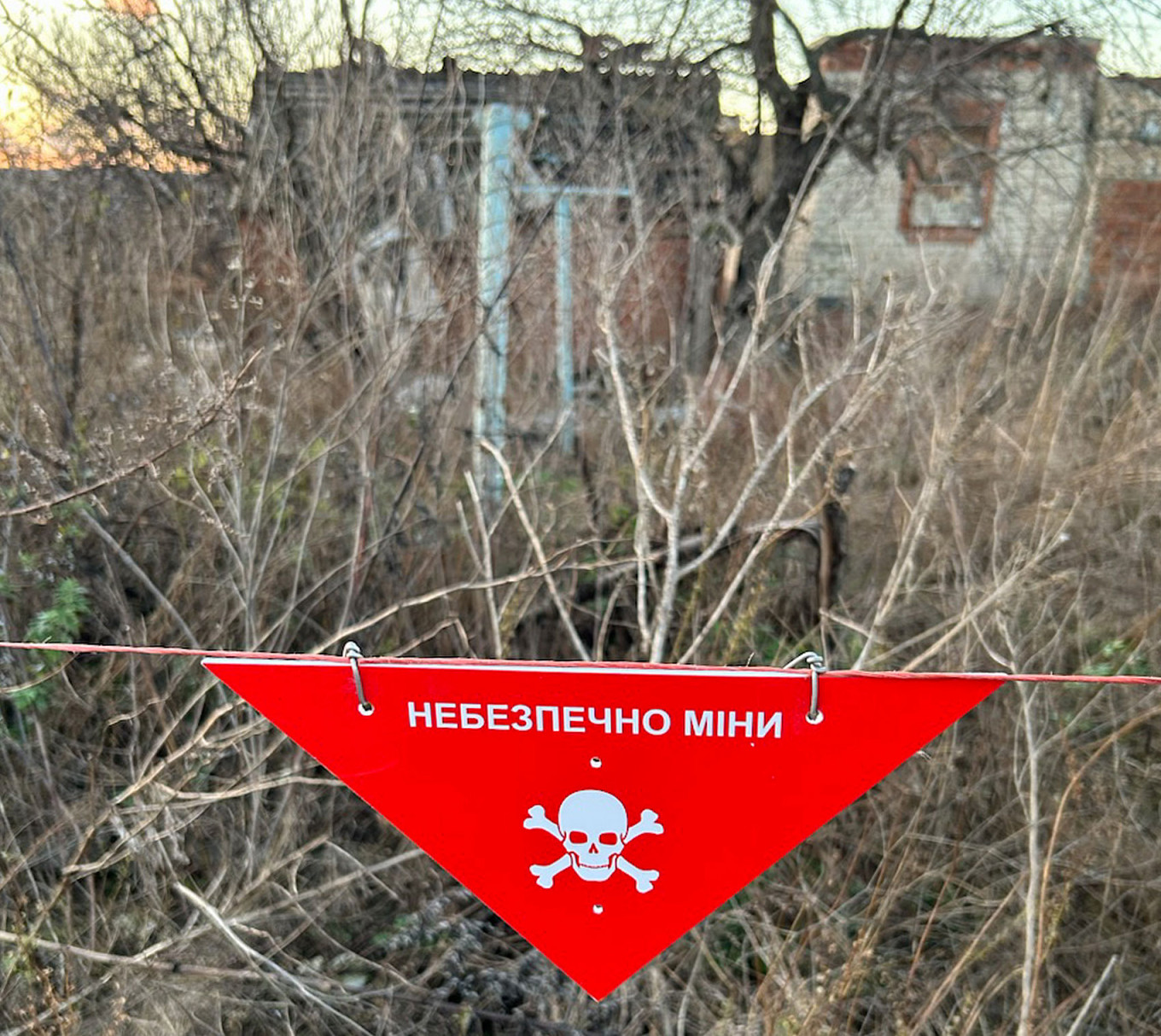
Mine-clearance units explain that critical infrastructure is their priority.
Another demining team from the Kyiv region says that it will "take years, if not decades, to demine the entire village." They add: "But the longer we wait, the more unstable and dangerous the mines will become."
Viktor and Larissa did not wish to wait that long.
"Demining teams haven't defused mines on our property because we defused them ourselves after we returned," Viktor says.
"So far, we have collected eight 'petals’," — a local term for the Russian-made PFM-1 mines with which the village is filled.
Digging through the bushes at his property line, he points to a mine hidden among stones on the ground.
"Twenty-five kilograms of weight are enough to trigger it, so don't touch it," he warns.
Viktor and Larissa said they believe that the former residents of Kam’yanka will return in two or three years.
The deminers, who lack the manpower and equipment to demine the majority of the village, are far less optimistic.
Meanwhile, mines remain a real danger to everyone in the village. Half a year ago, a villager who was collecting mines from his property accidentally stepped on one, costing him his life.
Long-term effects from the war such as this will make it nearly impossible for many to return.
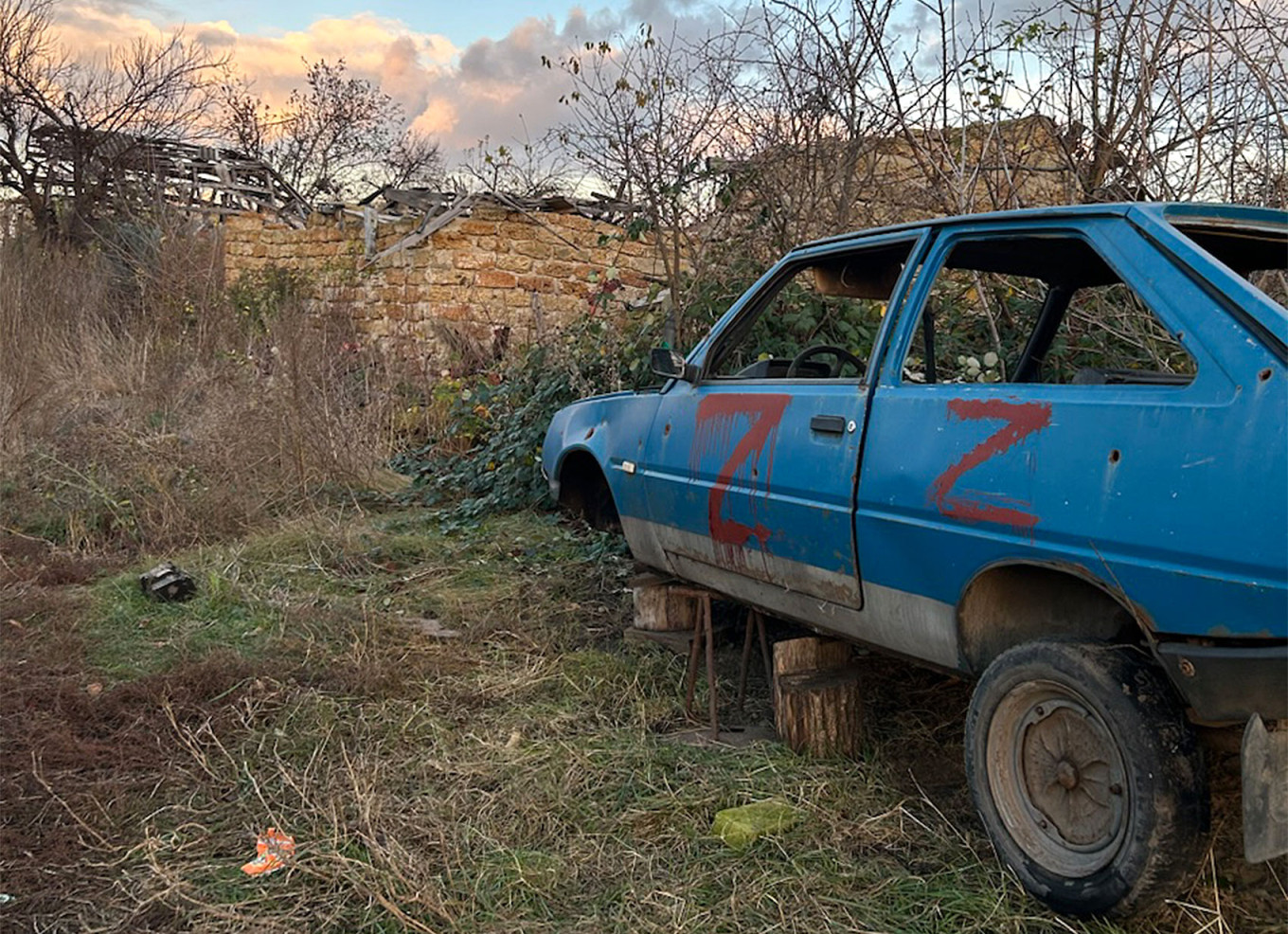
For now, Viktor and Larissa are doing what they can to rebuild and thrive. In the fall, they harvested pumpkins, corn and tomatoes. They keep chickens and ducks in their yard. Small amounts of foreign aid keep them afloat. An old metal stove heats the single room they live in. They look forward to seeing their daughter in Odesa again.
Just a few meters from the chicken coop lies a Russian 2S19 self-propelled howitzer, destroyed during a Ukrainian counterattack.
"That's a modern Russian howitzer,” Viktor says with pride. “Look, there's still a shell in the barrel. The casing has already been stolen.”
The blast from the ammunition explosion hit Viktor and Larissa's house, and the artillery turret fell onto their land. For them, it is a souvenir from harder times and a reminder of their freedom.
When asked what motivated them to return and rebuild after the destruction, both Viktor and Larissa look puzzled by the question but do not hesitate to their answer.
"This is our home," Viktor says.
Larissa adds: "We were born here, our parents and children were born here. We see ourselves nowhere else but on our land, and we will not give the Russians the satisfaction of driving us away from our land."
Not everyone shares this optimism. Millions of Ukrainians have been displaced and tens of thousands have been killed in Russia’s war. Millions more currently live under Russian occupation.
Even for those who have the opportunity to return home, simply starting the rebuilding process will require billions in humanitarian and reconstruction aid.
In the meantime, the war’s long-term consequences will impact the Donbas region significantly. It will likely take years for electricity and water to be available in many of Ukraine’s war-torn regions. Entire cities and villages must be demined. Until they are, the mines will pose a deadly threat to farmers and children alike for decades.
Until the day comes when the majority of Ukrainians can return to their homes and land, Kamyanka’s rebirth remains a testament to the resilience and persistence of two Ukrainian villagers.
“No matter what, everything will be fine,” Larissa says. “We believe and hope.”
A Message from The Moscow Times:
Dear readers,
We are facing unprecedented challenges. Russia's Prosecutor General's Office has designated The Moscow Times as an "undesirable" organization, criminalizing our work and putting our staff at risk of prosecution. This follows our earlier unjust labeling as a "foreign agent."
These actions are direct attempts to silence independent journalism in Russia. The authorities claim our work "discredits the decisions of the Russian leadership." We see things differently: we strive to provide accurate, unbiased reporting on Russia.
We, the journalists of The Moscow Times, refuse to be silenced. But to continue our work, we need your help.
Your support, no matter how small, makes a world of difference. If you can, please support us monthly starting from just $2. It's quick to set up, and every contribution makes a significant impact.
By supporting The Moscow Times, you're defending open, independent journalism in the face of repression. Thank you for standing with us.
Remind me later.



